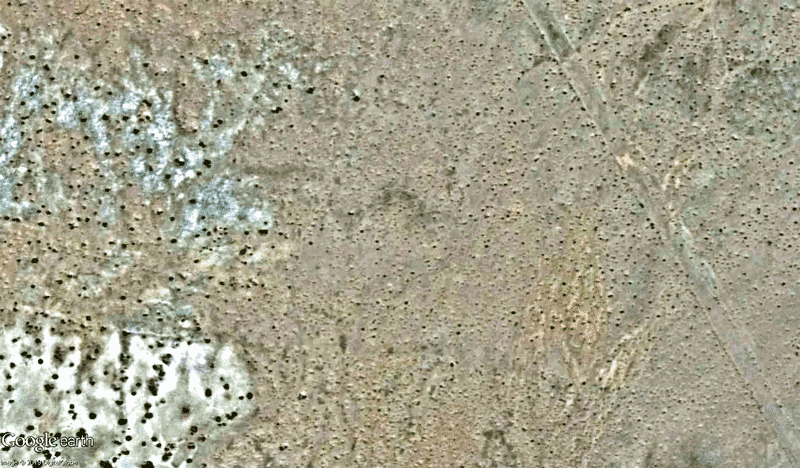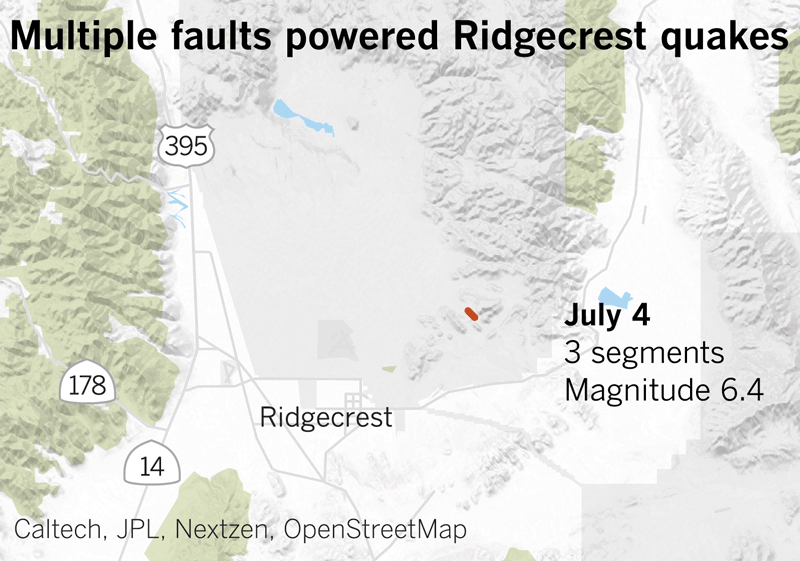
The Ridgecrest earthquake back in July has shown how a relatively small quake can trigger faults over a wider area. The Ridgecrest quake has seen over 24 faults rupture.

Ridgecrest started with three separate quakes, which released enough energy to trigger a 6.4 sized quake. The following day there were 4 additional quakes which then triggered a 7.1 sized quake.
“The geometry of this fault network is just incredibly complicated,” said Zachary Ross, Caltech assistant professor of geophysics. “These faults are unmapped … many of them are at right angles to each other; they’re cross-cutting each other. In the central portion of it, they are spaced a few kilometers apart, like dominoes. There’s 20 of them in a row. This 7.1 ripped through all of these.”
Read More: LA Times